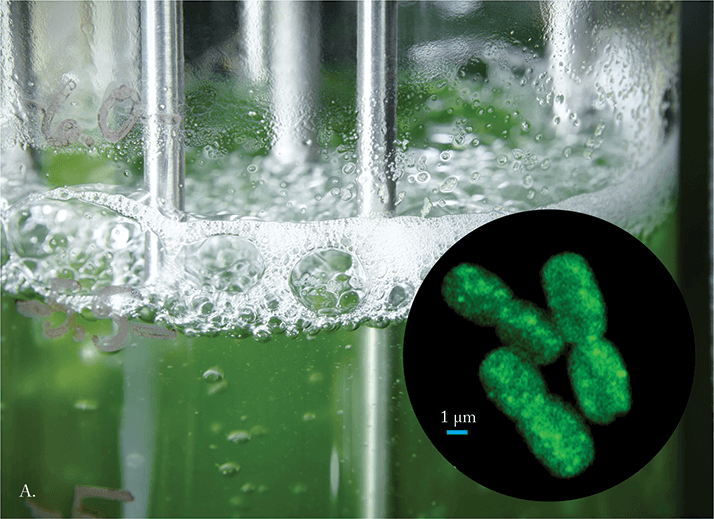Towards the end of 2013, researchers at the Pacific Northwest National Laboratory (PNNL) hit the news with an analytical first: the monitoring of redox activity in specific proteins within living cells (1). Redox reactions, which modulate protein function by adding or subtracting electrons, make up a rapid regulatory network that is involved in many aspects of cell function. Increased knowledge of the process is particularly exciting in the field of biofuels, where “tinkering” with key proteins can regulate the production of useful chemicals.We caught up with Aaron Wright, senior scientist in Omics Biological Applications (Biological Sciences Division, PNNL) and team leader of the project.
The cyanobacterium utilized in our study (see Figure 1) is known to have exceptional growth rates, and is a particularly promising organism for producing biofuels. Redox reactions are an important means by which cyanobacteria sense their environment and respond to change. It has been long postulated that redox controls many key metabolic reactions and those same reactions mediate the production of small molecules that can be used as biofuels (or biofuel precursors). We wanted to identify the redox dynamics within living cells, but also to characterize the proteins and pathways undergoing dynamic redox changes upon a nutrient perturbation.

The major challenge in measuring protein redox dynamics is that the harvesting and lysing of cells causes protein oxidation, thus destroying the true redox chemistry of the living cell. Therefore, we had to synthesize chemical probes that were capable of entering live cells to directly measure redox dynamics by specifically labeling redox-sensitive proteins. The probes flag redox events by binding to certain forms of cysteine – an amino acid known to be a key player. We used both fluorescent imaging and mass spectrometry-based proteomics to determine the targets of our
chemical probes.
One of the key findings, which was also somewhat of a surprise, was the number of transcription-regulating proteins that are highly sensitive to redox dynamics. This group of proteins regulates protein production so are of great interest. Clearly, redox chemistry directly influences both metabolic pathways (as we found) and protein production.
If we can identify the metabolic pathways affected by redox processes, we can potentially use synthetic biology to engineer the organism. That way, we can take advantage of redox reactions that increase small molecule or biofuel production, or attempt to remove the ones that act as roadblocks.
We are studying the effects of light-dark cycling on redox dynamics in cyanobacteria. We are also looking at simultaneously measuring redox dynamics and enzyme activity in order to identify the enzyme functions that are directly mediated by redox chemistry within living cells.
References
- N. C. Sadler et al., “Live Cell Chemical Profiling of Temporal Redox Dynamics in a Photoautotrophic Cyanobacterium”, ACS Chem. Biol., 9 (1), 291–300 (2014).




